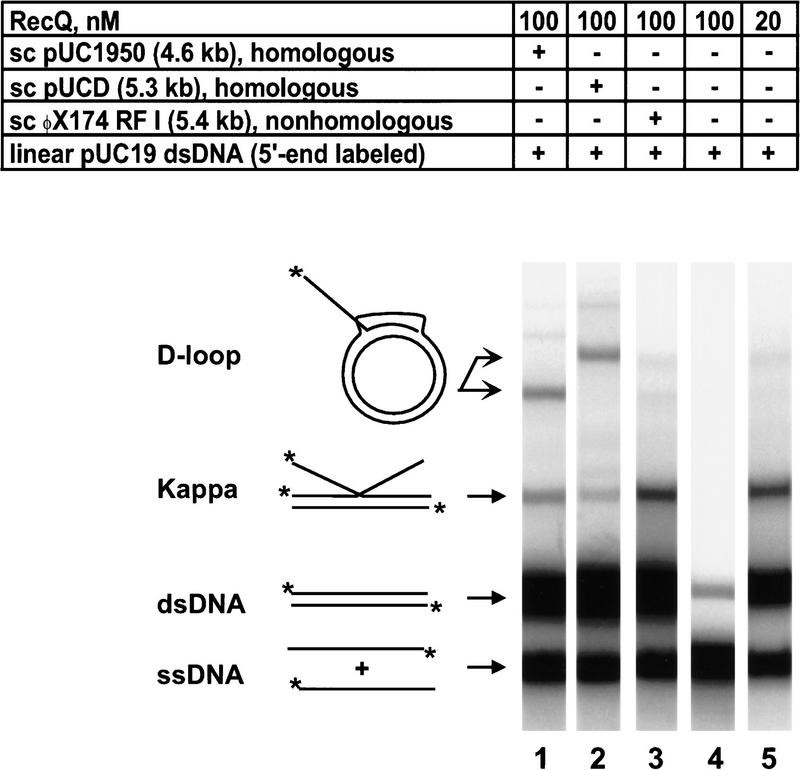Figure 2.
The RecAQ-coupled pairing reaction produces two classes of joint molecules. Each lane represents a 10 min time point taken from the indicated reaction. (Lanes 1–3) scDNA recipient in each reaction was different to determine the position of the band corresponding to scDNA-dependent D-loops. (Lane 1) Taken from a standard coupled reaction, with the deduced migration positions of each joint molecule indicated to the left. The products shown in lanes 2 and 3 are from reactions with larger, homologous pUCD scDNA and nonhomologous φX174 RF I, respectively. The migration of the D-loop band is slower for the larger pUCD but the same band is completely absent when φX174 RF I is used in its place. (Lanes 4,5) scDNA was omitted from reactions to identify scDNA-independent Kappa intermediates. (Lane 4) Band corresponding to the Kappa intermediate is absent at the prevailing RecQ helicase concentration (100 nm); however, the band is present with fivefold less RecQ helicase (lane 5), confirming that it is scDNA-independent.

